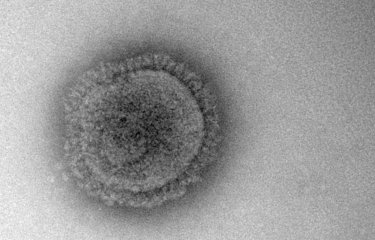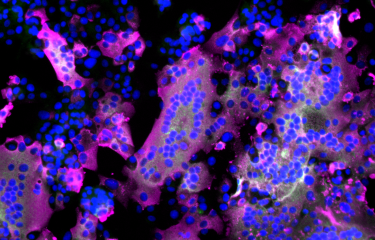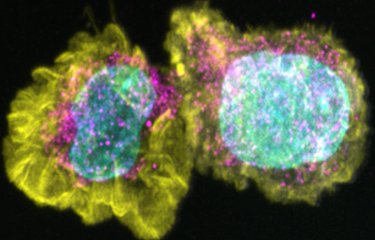Monkeypox is an emerging and neglected infectious disease caused by the Monkeypox virus (MPXV). The disease has a similar clinical presentation to smallpox, with a maculopapular rash (a skin rash characterized by small spots), especially on the palms of the hands and the soles of the feet.
Human transmission of the MPXV virus, responsible for monkeypox, occurs either through direct contact with infected animals or through contact with body fluids or respiratory droplets from an infected person. Although monkeypox is a zoonotic disease, the animal reservoir has not yet been identified. Human cases of MPXV can be found in several countries in West Africa and Central Africa. In the Congo Basin, two countries are particularly affected: Democratic Republic of the Congo (DRC) and Central African Republic (CAR), which have seen an increase in the number of cases over the past two decades. (read Monkeypox: the epidemic potential will continue increasing, with diminishing herd immunity against viruses responsible for smallpox)
Sequencing the genome of MPXV strains from recent outbreaks in the CAR
Although several MPXV genomes had been sequenced from previous outbreaks in the DRC and Nigeria, no genomic data was currently available for the CAR. As part of an international collaborative research effort involving several teams, the genomes of 10 MPXV isolates collected during outbreaks between 2001 and 2018 in the CAR were sequenced. These data were used to determine the phylogenetic links between the CAR MPXV lineages and those previously described in Central and West Africa.
Infections at the edge of rainforests following population movements
"Our main results indicate that the 10 CAR isolates belong to three lineages closely related to those found in the DRC and in the rainforest in the Congo Basin," explains Nicolas Berthet, a scientist at the Institut Pasteur in Paris (in the Environment and Infectious Risks Unit) and at the Institut Pasteur of Shanghai, Chinese Academy of Sciences. "Since most human cases in the CAR occurred at the northern edge of the western and eastern rainforests, transmission from wild animals living in these forests is the most likely hypothesis. Moreover, molecular dating estimates suggest that periods of intense political instability resulted in population movements within the country, which may have led to more frequent contacts with host wild animals."
The socio-economic situation in the CAR, armed conflicts and environmental disturbances are likely to lead to heightened interaction between human populations and wild animals, thereby increasing the risk of zoonotic spillover.
This study is part of the priority scientific area Emerging infectious diseases of the Institut Pasteur's strategic plan for 2019-2023.
Source:
Genomic history of human monkey pox infections in the Central African Republic between 2001 and 2018, Scientific Reports, June 22, 2021
Nicolas Berthet1,2,3*, Stéphane Descorps‑Declère4, Camille Besombes5, Manon Curaudeau6, Andriniaina Andy Nkili Meyong3, Benjamin Selekon7, Ingrid Labouba3, Ella Cyrielle Gonofio7, Rita Sem Ouilibona7, Huguette Dorine Simo Tchetgna3, Maxence Feher2, Arnaud Fontanet5,8, Mirdad Kazanji7, Jean‑Claude Manuguerra2, Alexandre Hassanin6, Antoine Gessain9,10 & Emmanuel Nakoune7
1The Center for Microbes, Development and Health, CAS Key Laboratory of Molecular Virology and Immunology, Institut Pasteur of Shanghai-Chinese Academy of Sciences, Discovery and Molecular Characterization of Pathogens, No. 320 Yueyang Road, XuHui District, Shanghai 200031, China.
2Institut Pasteur, Unité Environnement et Risque Infectieux, Cellule d’Intervention Biologique d’Urgence, Paris, France.
3Centre International de Recherches Médicales de Franceville (CIRMF), Franceville, Gabon.
4Institut Pasteur, Centre of Bioinformatics, Biostatistics and Integrative Biology (C3BI), Paris, France.
5Institut Pasteur, Emerging Diseases Epidemiology Unit, Paris, France.
6Institut de Systématique, Évolution, Biodiversité (ISYEB), Sorbonne Université, MNHN, CNRS, EPHE, UA, Paris, France.
7Institut Pasteur de Bangui, Bangui, Central African Republic.
8Unité Pasteur-CNAM Risques Infectieux et Emergents (PACRI), Conservatoire National des Arts et Métiers, Paris, France.
9Institut Pasteur, Unité d’Epidémiologie et Physiopathologie des Virus Oncogènes, Département de Virologie, Paris, France.
10Centre National de Recherche Scientifique (CNRS) UMR3569, Paris, France.





